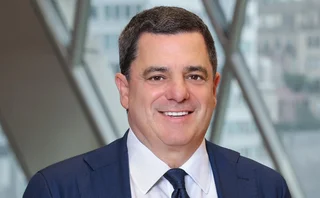
Technology vendor of the year: Adenza
Risk Awards 2023: A wild year for margined products translated into a busy one for our technology winner

One pillar of the reforms agreed after the bank bail-outs of 2008 was the mandatory clearing of over-the-counter derivatives – an attempt to ensure counterparty exposure was being calculated centrally, and margined daily. Of course, there is no free lunch in financial markets. Many warned at the time that counterparty risk was simply being swapped for liquidity risk – that, in volatile conditions, participants in cleared markets would be unable to meet their margin calls.
In the intervening years – of record-low interest rates and sedated markets – those warnings seemed alarmist. Not anymore.
In March 2022, the London Metal Exchange tore up an entire morning’s worth of nickel trades over fears that spiralling margin calls would threaten the solvency of some participants. In the same month, Europe’s energy firms called for central bank support to help them meet their own margin obligations – support that came later in the year, in the form of loan programmes and a package of measures from the EU. Then, in September, the UK’s short-lived Truss government panicked markets with its wild budget plans, forcing the Bank of England to buy gilts in an attempt to protect pension funds facing another margin squeeze.
‘What if’ simulations are a use case that has been talked about for a long time, but it’s finally becoming reality – something people are doing
Sophie Marnhier-Foy, Adenza
Three crises; three extraordinary responses, as clearing houses, central banks and politicians were forced to step in.
To add to this drama, the OTC derivatives market had to contend with the roll-out of the final phase of the uncleared margining rules (UMR), bringing hundreds of hedge funds and other smaller market participants into scope.
It was against this volatile backdrop that Adenza was named the winner for two categories in this year’s Markets Technology Awards – taking the crown for central counterparty (CCP) support and for its UMR service. The company, which was formed through the merger of Calypso Technology and AxiomSL in 2021, was praised by the MTA judges for its integrated platform and depth of its market knowledge – and was then chosen by Risk’s editorial team as technology vendor of the year.
Some of what Adenza and its clients had to face in 2022 was possible to anticipate. Some was not. But, as 2021 was winding down, it was trying to stay ahead of the game.
The firm regularly speaks with client focus groups – central counterparties (CCPs), for example – and it drew on their insight and feedback to ensure it was prepared.
“They talk to us about their business challenges, new regulation and how they might need to produce new reports or calculations,” says Sophie Marnhier-Foy, the firm’s global head of product marketing. “And of course, we discuss how the Calypso platform might need to change.”

The general feedback was that the platform offered sufficient flexibility to cope with a change of market regime. But those early conversations with CCPs and other client groups led to a range of product changes in 2022. Marnhier-Foy describes this as “evolving and naturally adjusting to what the market needs”.
The changes included: the roll-out of an enhanced margin engine, to which most CCP clients swiftly upgraded; the introduction of a web portal that provides clients with a real-time overview of the collateral management process, with data like age, value and volume of disputes or calls in different statuses; improvements to Adenza’s UMR threshold monitoring and average-aggregate-notional-amount calculator to allow clients to keep a close eye on their compliance status; as well as improved definitions of which instruments fall within the UMR rules.
It’s a long list, but it had to be. Marnhier-Foy says the past few years have been a “perfect storm” for CCPs, which simultaneously “need to do more, but be more careful”.
One thing clearing houses are constantly being pressed to do is make life easier for their own users, which might mean trimming the margin burden, or providing tools that help users monitor and manage that burden. Adenza has a role to play in both – for example, by supporting the provision of cross-product margining, in which the calls for different cleared products are partially offset against each other, reducing the net total.
These initiatives have been around for some years, but can be cumbersome, and have generally not proved as transformative as CCPs have hoped. Marnhier-Foy, though, says interest has surged over the past 12 months – reflecting not just spiking margin calls, but also the wider range and greater depth of cleared products that could in theory be offset. Adenza’s integrated coverage – of listed and OTC derivatives – makes this an easier lift.
Clients have also been embracing tools that help them analyse their risks – and the resulting margin calls – in a range of scenarios, which has led to a much keener interest in ‘what if’ tools and scenario analysis, according to Marnhier-Foy.
“‘What if’ simulations are a use case that has been talked about for a long time, but it’s finally becoming reality – something people are doing,” says Marnhier-Foy. “The market is now more mature and the offering is more complex. Before doing a trade, it’s very useful to be able to do a what-if simulation.”
The market also had to digest the final phase of the UMR regime, which brought hundreds of new market participants into scope. From September, firms with more than $8bn in uncleared derivatives contracts had to start exchanging collateral – posting to a custodian bank – with any other counterparty, if their bilateral exposure exceeded $50 million.
Adenza responded by offering a slimmed down version of its Calypso technology stack that these smaller clients could use to monitor their margin requirements – and monitoring became a central part of the strategy for many firms.
Gil Guillaumey, head of strategy for capital market solutions at Adenza, says many of these smaller institutions sought to comply with the rules – while avoiding the potentially costly and cumbersome work of exchanging margin – by remaining below the $50 million threshold. That task became more difficult in last year’s volatile markets.
“It requires constant monitoring,” says Guillaumey.
Only users who have a paid subscription or are part of a corporate subscription are able to print or copy content.
To access these options, along with all other subscription benefits, please contact info@risk.net or view our subscription options here: http://subscriptions.risk.net/subscribe
You are currently unable to print this content. Please contact info@risk.net to find out more.
You are currently unable to copy this content. Please contact info@risk.net to find out more.
Copyright Infopro Digital Limited. All rights reserved.
As outlined in our terms and conditions, https://www.infopro-digital.com/terms-and-conditions/subscriptions/ (point 2.4), printing is limited to a single copy.
If you would like to purchase additional rights please email info@risk.net
Copyright Infopro Digital Limited. All rights reserved.
You may share this content using our article tools. As outlined in our terms and conditions, https://www.infopro-digital.com/terms-and-conditions/subscriptions/ (clause 2.4), an Authorised User may only make one copy of the materials for their own personal use. You must also comply with the restrictions in clause 2.5.
If you would like to purchase additional rights please email info@risk.net
More on Awards
Market liquidity risk product of the year: Bloomberg
Bringing clarity and defensibility to liquidity risk in a fragmented fixed income market
FRTB (SA) product of the year: Bloomberg
A globally consistent and reliable regulatory standardised approach for FRTB
Best use of cloud: ActiveViam
Redefining high-performance risk analytics in the cloud
Best use of machine learning/AI: ActiveViam
Bringing machine intelligence to real-time risk analytics
Collateral management and optimisation product of the year: CloudMargin
Delivering the modern blueprint for enterprise collateral resilience
Flow market-maker of the year: Citadel Securities
Risk Awards 2026: No financing; no long-dated swaps? “No distractions,” says Esposito
Pricing and analytics: fixed income – Quantifi
Quantifi delivers high-performance, transparent and adaptable pricing and risk analytics for fixed income and credit markets
Derivatives house of the year: Citi
Risk Awards 2026: Rev up, RWAs down, as US bank gets back on track (with added XiNG and XiP)







